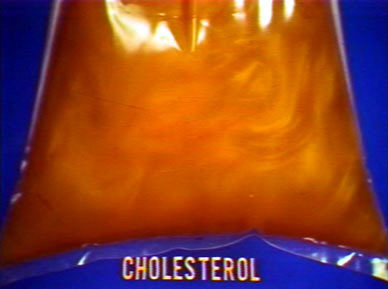Q1: What is pleural effusion?
- Normal pleural space is lined by a thin film of fluid. Visceral and parietal pleura are in opposition and glide over each other during respiration.
- When excess fluid accumulates in pleural space it is called pleural effusion.
Q2: What are the types of fluid that can accumulate in pleural space?
|
 Cholesterol effusion from a patient with rheumatoid arthritis. |
Q3: What are the mechanisms by which fluid accumulates in pleural space?
- Transudate: Due to hydrostatic pressure changes as in CHF, cirrhosis and hypoalbuminemia
- Exudate: Due to inflammation of pleura as in malignancy, rheumatoid arthritis, etc.
- Pus: Empyema from infections
- Blood: Trauma
- Chyle: From rupture of thoracic duct
- Urine: Urinothorax in hydronephrosis
Q4: How does pleural effusion appear in an upright chest x-ray?

- Homogenous density in the dependent portion, right lung base
- Loss of diaphragmatic and right cardiac silhouette
- Meniscus high in axilla
Q5: How does pleural effusion appear on CT?

CT is done in the supine position. Fluid settles in the dependent portion in the back of chest. The white arrows point to bilateral pleural effusions.